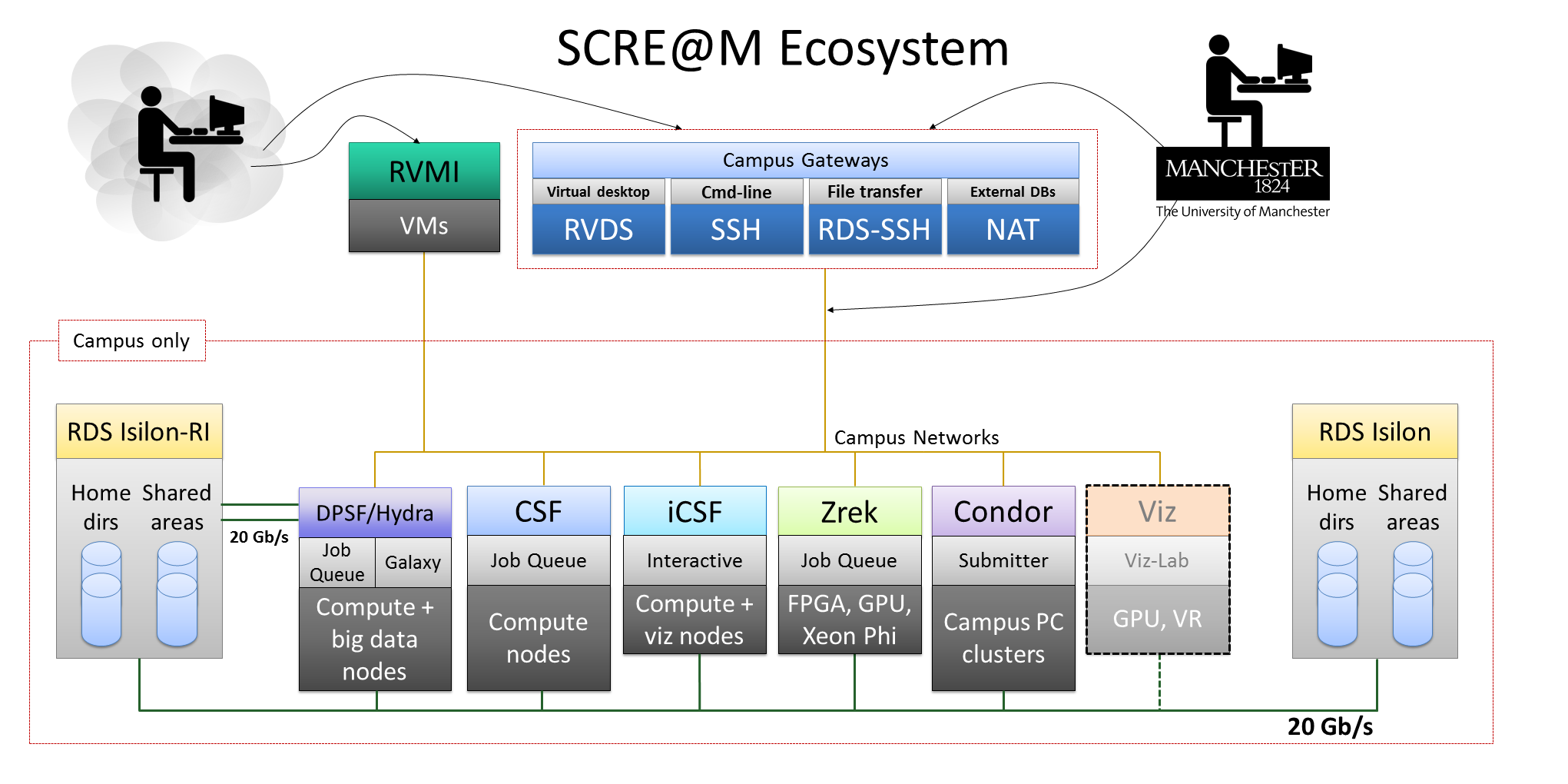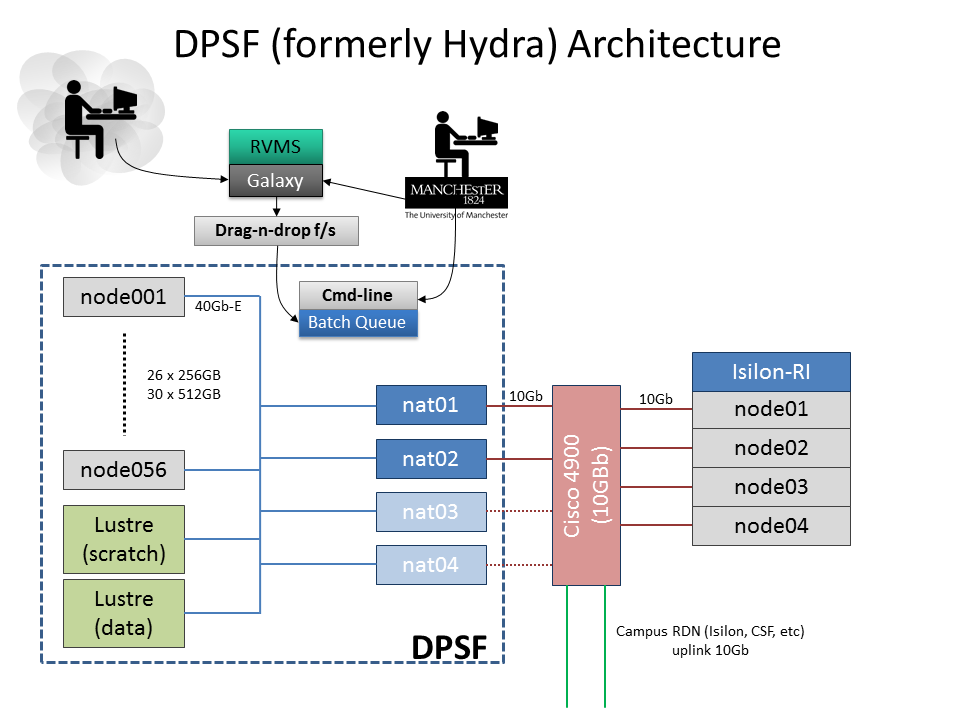CIR Ecosystem

[[ Slide navigation:
| Forwards: | right arrow, space-bar or enter key |
| Reverse: | left arrow |
]]
The Data-Processing
Shared Facility
SCRE@M?
Tightly-integrated package of platforms/capabilities, including:
The Data-Processing Shared Facility
The DPSF is a new computational resource within SCRE@M designed for processing large amounts of data:
. . .dominated by EPS, but then. . .
. . .the nature of computational research changed — FLS/MHS came joined the party. . .
Dedicated Isilon cluster — "Isilon-RI":
Currently available to contributors only.


For more information about the SCRE@M and The DPSF please visit:
Also: